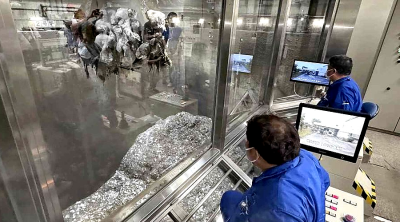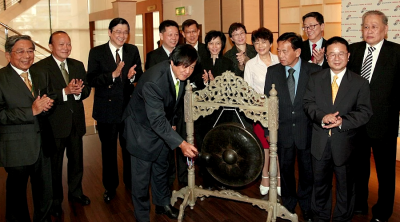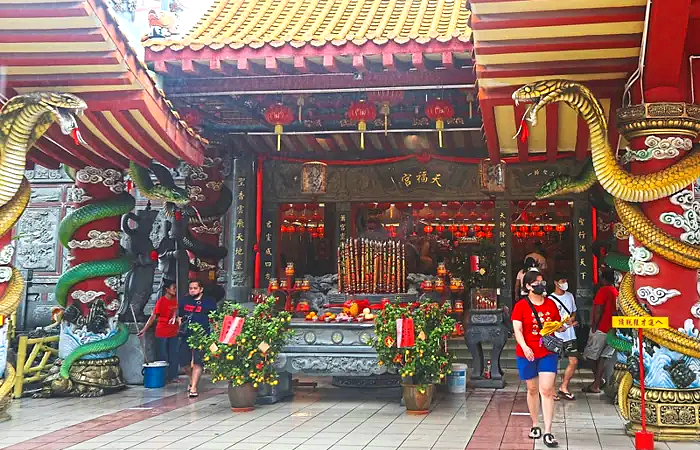
When snake temple is mentioned in Malaysia, everyone’s first thought tends to be the famous one in Penang. But really, there are a few more peppered throughout our country that many may not be familiar with.
As we enter the Year Of The Wood Snake, it feels fitting to learn about our local snake temples. Being a diverse nation, Malaysia has Buddhist, Taoist and Hindu temples that are dedicated to serpent deities.
The worshipping of gods and goddesses related to snakes – or naga in Sanskrit, meaning “serpent” – predates these religions, but essentially, the typically feared animal has, since ancient times, been deemed sacred and adopted as a spiritual symbol.
To understand more, especially of how snake deities and the slithery creature itself are revered in the local context, make sure to visit these snake temples found across Malaysia.
Tian Hock Kung, Selangor
There is a much closer snake temple to visit for people who are living in the Klang Valley.
Located in Klang, Selangor, Tian Hock Kung is a temple regarded as both Buddhist and Taoist. It has a serene atmosphere, and it is not frequently flocked by tourists.
Note that visitors with ophidiophobia (fear of snakes) might instinctively recoil the moment they see the snakes perched atop the roofs – or even take to their heels when they come face-to-face with the snakes wound around the temple’s pillars.
That is to say, there are serpents adorning basically every part of the temple inside and out, since snake is a symbol of renewal and perseverance in Taoism.
A walk around the temple’s relatively large compound allows visitors to observe its ornate exterior, which includes a pond (with a seahorse statue … for some reason), while a venture inside will show the temple’s intricate interior.
The snake sculptures may only be life-like, but do look out for the actual python in the temple! (Okay, don’t worry, it’s always caged up.)
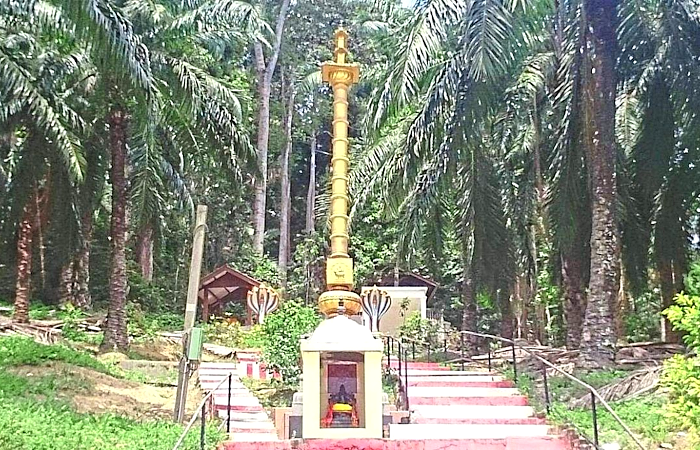
Nagamalai Alaiyam, Johor
Set within a palm plantation in Muar, Johor is a Hindu temple dedicated to the serpent goddess, Naga Amma.
The temple, Nagamalai Alaiyam, has been part of the plantation’s lush landscape since the 1970s, when founder Gopala Menon was told in a spiritual dream to look for a sacred place which would later be the basis of the temple.
Menon’s son, Govindan, shared on the temple’s Facebook page about how his father, encouraged by his mother, never gave up on looking for the place after his dream. When Menon finally identified a cave as the holy place, he dedicated his life to building the temple there since then.
Decades later, a small but vibrantly-coloured religious site awaits devotees among the trees – another son of Menon’s, Krishnan, would succeed him in being the temple’s caretaker. To reach the temple, devotees must hike up a red-and-white staircase, along which there are several shrines that they can stop at to pray.
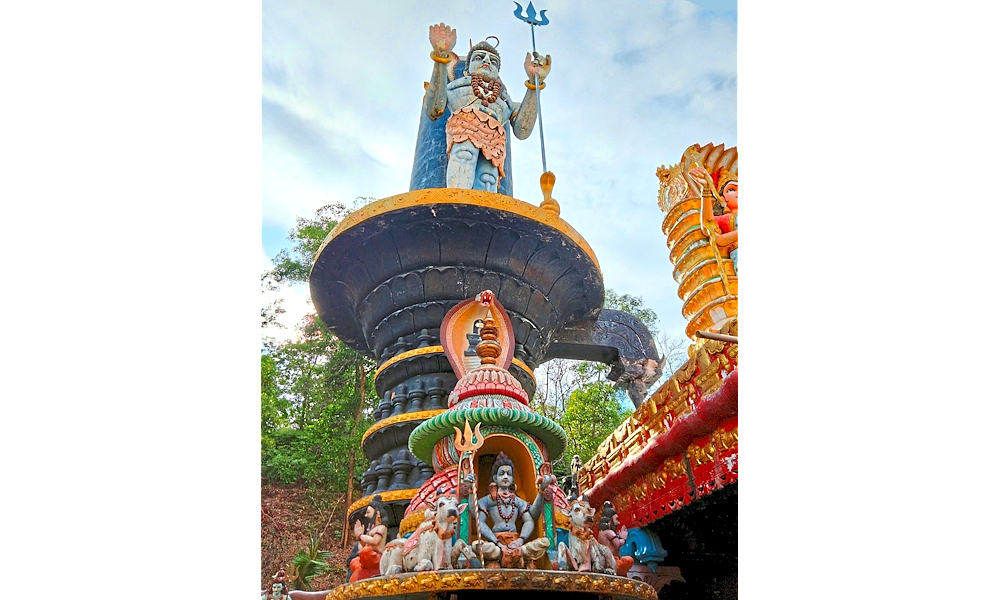
Om Sri Maha Athi Nageswari Amman Alayam, Selangor
Its towering stature and colourful facade make this temple hard to miss, and upon stepping through the gates, it’s easy to see who the deity is that the temple is devoted to.
Om Sri Maha Athi Nageswari Amman Alayam in Selangor, one of the state’s most ornately decorated temples, is a Hindu temple dedicated to the Snake Goddess Nageswari Amman.
Also known as the Nageswary Amman Temple, the Puchong-based place of worship features a 20m Shiva Lingam and seven huge pillars depicting seven-headed cobras.
Since it was officially consecrated in February 2016, various festivities such as the annual Thiruvizha Festival as well as weddings and other functions have been held within its premises.
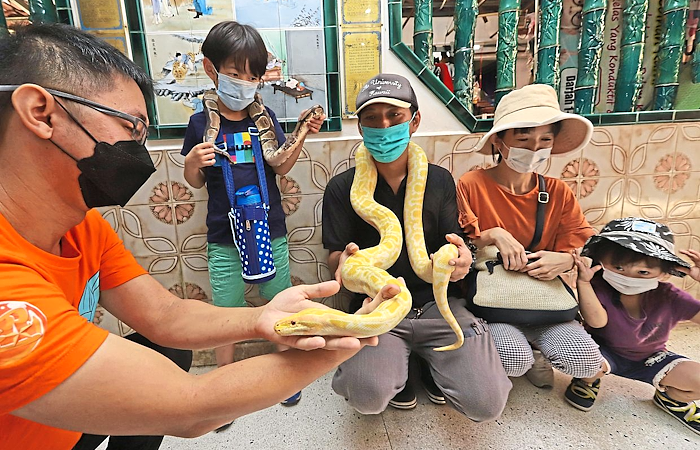
Snake Temple, Penang
A Malaysian snake temple list is incomplete without arguably the most famous of such temples in the country, namely the Snake Temple in Penang.
That is the name it is most known by, but the Buddhist temple is also referred to as Hock Hin Keong. Alternatively, it goes by the name Cheng Hoon Giam, Fu Xing Gong or Ban Ka Lan Snake Temple.
One might notice the lack of grandiose serpent-inspired embellishments around this particular place, but it is still regarded as the snake temple because of Chor Soo Kong – a Chinese Buddhist monk-turned-deity whom the temple is built for – and his special connection to the slithery animal.
It is said that following the completion of the temple more than two centuries ago, snakes from the surrounding jungle started taking shelter in it.
Among these are the Wagler’s Pit Vipers, which have been dwindling in number in recent years, but the temple committee is working on rectifying this. (The committee more than welcomes anyone wanting to donate pit vipers to the temple.)
The biggest draw for tourists here is arguably the chance to take a photo with a python and a pit viper draped over their shoulders. That aside, the temple sees the biggest throngs of visitors during its annual Flame Watching Festival.
Held in conjunction with the birthday of the resident deity, the festival gathers devotees from all over Malaysia and abroad. This year, it is set to be held on Feb 2.
By the way, avid watchers of The Amazing Race would’ve seen this temple featured in the American reality TV show’s 16th season, specifically in the episode, You’re Like Jason Bourne, Right?
ADVERTISEMENT
ADVERTISEMENT






